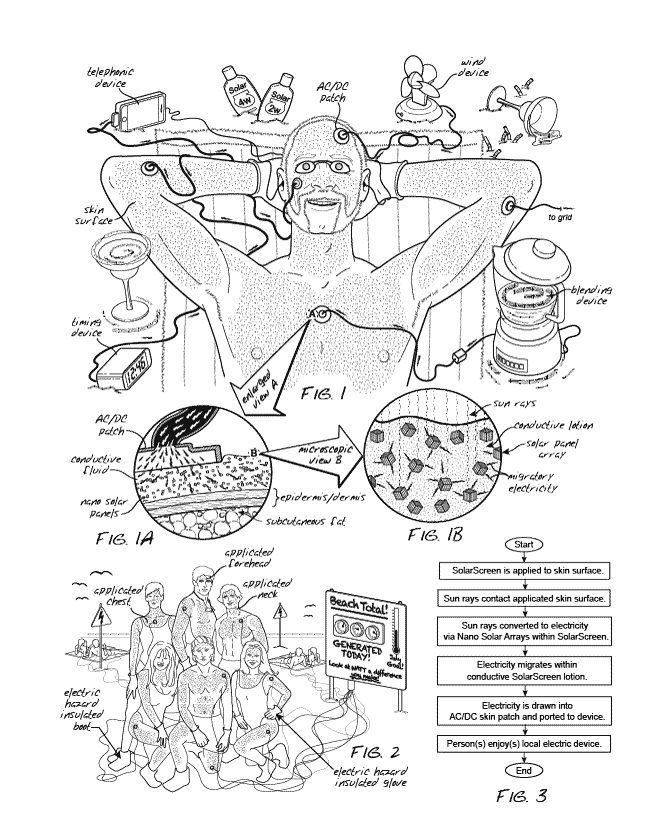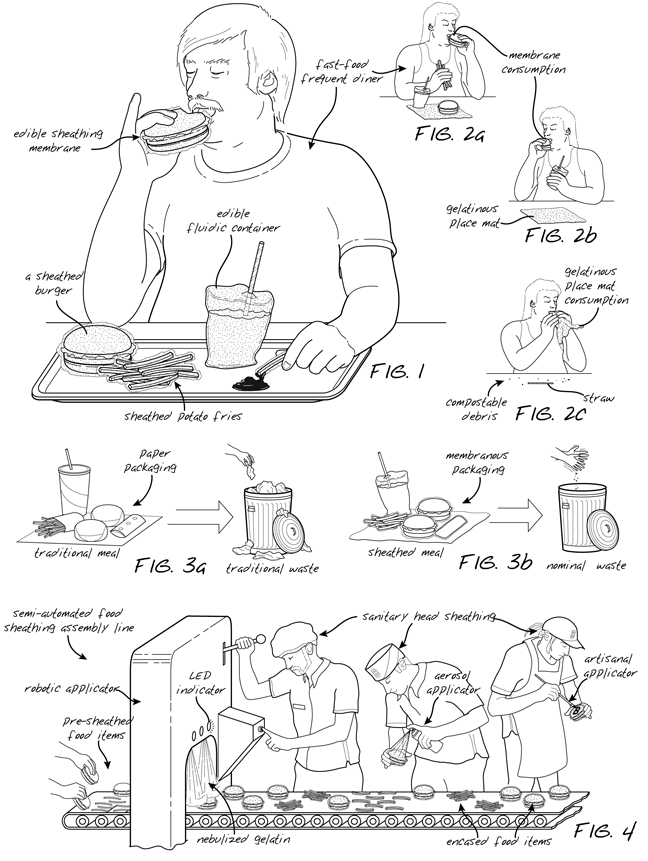Category Archives: Inventions
Free invention: Sneeze Cone
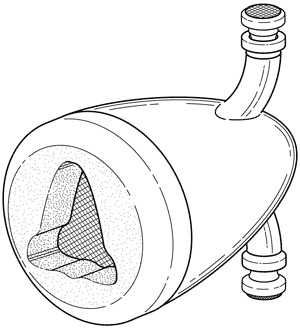
Abstract
A conically shaped electrical generator driven by the high-velocity blast of a sneeze. The device could be operated manually or chin actuated.
Background of Invention
For nearly six decades scientists have been trying to harness the high winds of hurricanes to make electricity. By one estimate, the wattage generated by a single Category 2 hurricane would provide one year’s worth of electricity for a city the size of Cincinnati. To date, however, the high winds these scientists seek have torn to bits every windmill, turbine, generator, and wind sock that has been erected. Unbeknownst to them, an easier and less destructive alternative sat right under their noses: the 150–200 mph winds of a human sneeze dwarf those of any hurricane. Though less sustained than hurricane winds, sneeze gusts drive turbine blades with unbelievable force. In the current invention, small electrical generators capture sneeze winds and create electricity for personal use or for upload to the grid. During peak allergy seasons, sufferers could be recruited to sneeze farms for camaraderie and profit.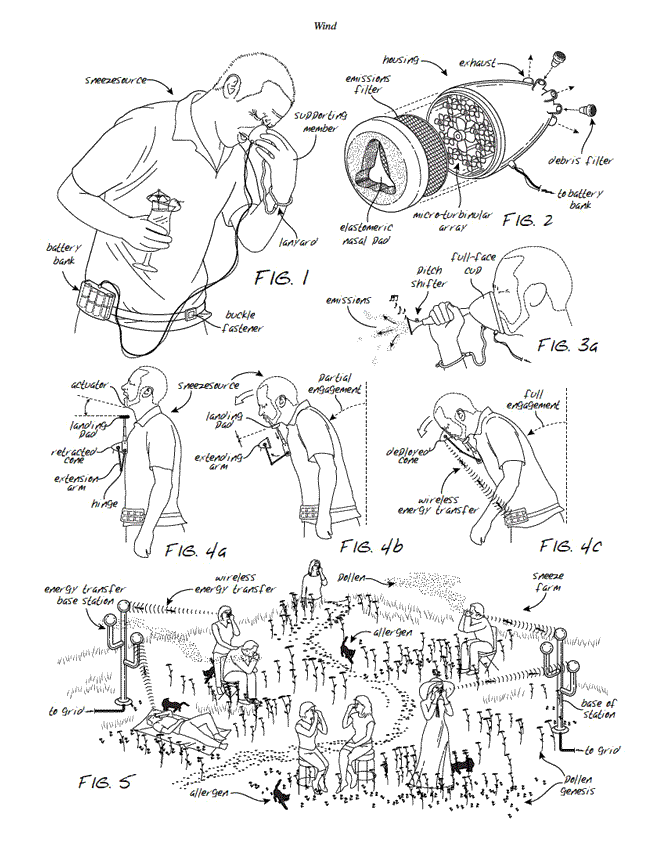
Free invention: Diaper Bowl
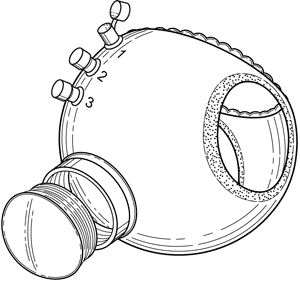
Abstract
A rigid plastic diaper with plumbing cleanout. A host of optional hose fittings can be used for cleansing and disinfecting the interior of the bowl and exterior of the derriere.
Background of Invention
Imagine an Olympic-sized swimming pool filled with baby excreta. And imagine a disposable diaper big enough to sop up all of that waste. Now imagine this colossal soiled diaper being dumped into one of our precious landfills. Are you beginning to picture the crisis at the overflowing landfills in the United States? We discard this amount of baby waste every three hours around the clock. While cloth diapers would protect our landfills from the 22 billion diapers used every year, laundering them would waste over 25 trillion gallons of otherwise clean, drinkable water. Utilizing resilient materials, the present invention offers an easily maintained, comfortable, extended-use diaper bowl. Attractive enough on its own, the bowl can also be seamlessly integrated into fashionable baby and geriatric clothing. 
Free invention: Burger Sheath
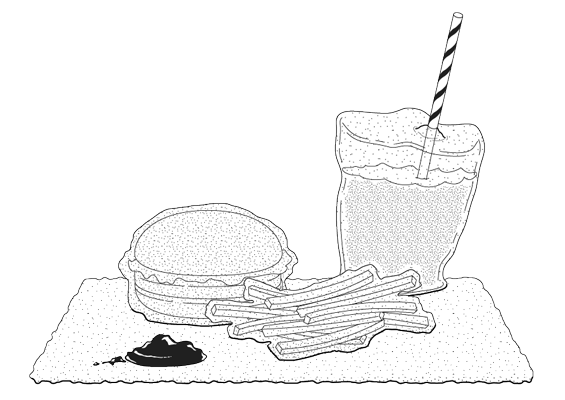
Abstract
A relatively thin, edible membrane of gelatin used as a substitute for fast-food disposable packaging and wrappers.
Background of Invention
When was the last time you recycled the burger wrapper from your favorite fast-food restaurant? Most likely, it was never. Fast-food packaging is the least-commonly recycled paper product in the world. While most packaging ends up in trash cans, the average American cars holds 8.5 square feet of fast-food packaging under seats and between seat cushions. And disposable packaging accounts for 35% of the total volume in an average American landfill. Experts have calculated that if the fast-food wrappers were removed from every U.S. automobile today, we would need to build six new landfills just to accommodate the overflow. It is conceivable that within 15 years the volume of discarded fast-food packaging in America will surpass the total volume of human beings in America. The current invention takes discarded wrapping material out of our landills and puts it where it belongs – in our bellies. Edible gelatin film, applied with aerosol or brush, encases and protects fast-food items. The sheathing material also protects the diner’s apparel from accidental splattering of condiments and grease during consumption, thereby eliminating the need for paper napkins. The gelatin can be flavor balanced to enhance the dining experience or colorfully tinted to offer exciting presentation options.
Free invention: Digit Hammock
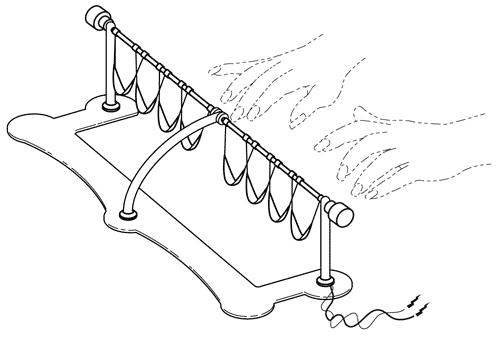
ABSTRACT
An electrical generator that uses a standard pulley/hammock system to convert the movement of one’s digits into electrical current.
BACKGROUND OF INVENTION
Imagine the following ad in your local newspaper: Help Wanted: Experienced secretary with energetic personality and muscular hands. Minimum typing speed of 60 microwatts per minute. Within years this ad will be a reality. As far back as the industrial revolution, scientists have used treadmills fitted with coils and magnets to generate small electrical currents. In the 1960s and ‘70s, when our country was heady with The Fitness Craze, many U.S. companies developed portable electrical generators. When fastened to the legs and/or feet of an individual, these devices could generate significant electricity during exercise. Many Americans viewed this moment as the new dawn of clean electricity. But with the growth of personal computing in the 1990s, people began sitting more and walking less. Today, many of America’s workers spends 100% of their workday in front of personal computers. According to one study, many office workers travel farther with their fingers across keyboards and smart phones than they travel with their legs to and from the office. Isn’t it time to let your fingers do the walking to a clean energy future? The current invention employs generators, geared like hand-crank radios, to capture the motion of keystrokes and finger gestures. These nanoelectrical generators can be modified for use in other digit-intensive activities. 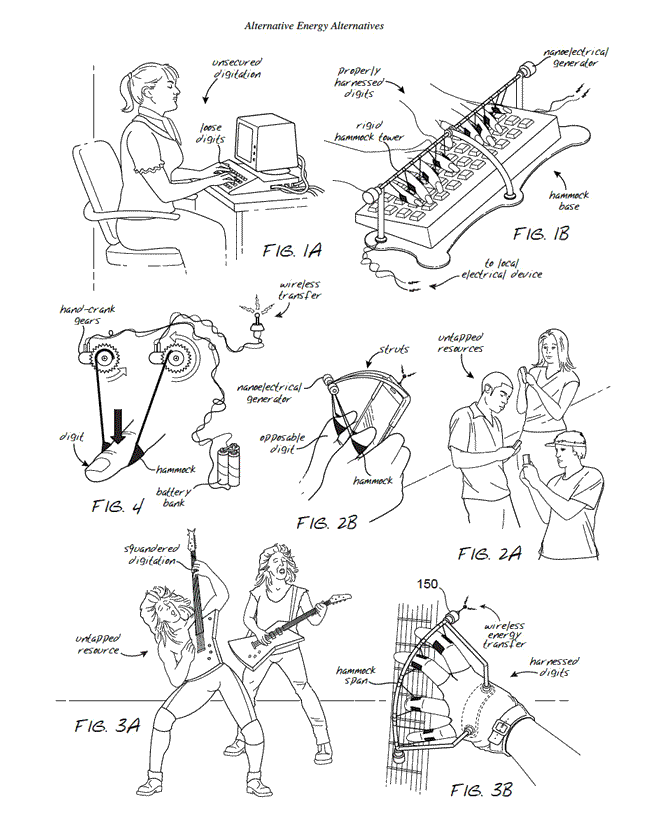
Free invention: Energy Trap
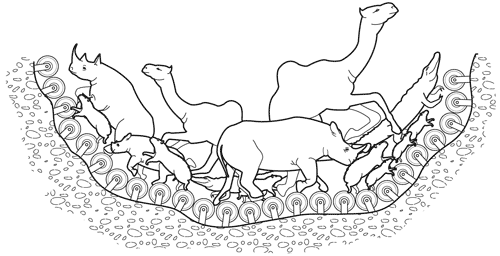
ABSTRACT
A deep pitfall lined with conveyer-type rollers that convert the frantic movements of an entrapped wild beast into clean, renewable electricity.
BACKGROUND OF INVENTION
Tribal peoples around the world are no longer content with ancient pastimes. Activities that appealed to their forefathers, like blow-darting marsupials, neck stretching, donning penis gourds, pale in comparison to the exciting and addictive activities of the west. They now demand our modern entertainment and conveniences, and they require the electricity it takes to run them. In order to meet this demand, we need to develop alternative energy sources using local resources. The current invention will supply limitless wattage to underdeveloped areas by humanely exploiting local wildlife. The “manpower” for these devices will be provided by medium-to-large animals that stumble into the pitfall. As the beasts scramble to escape the trap, they drive roller-style electrical generators. The animals also benefit from this high-intensity, low-impact aerobic workout.
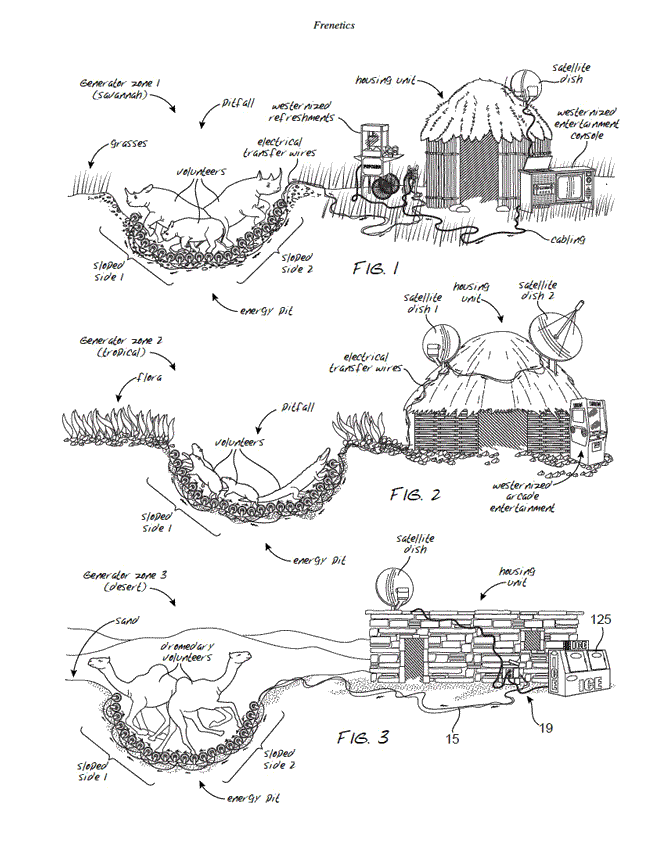
Free invention: SolarScreen

Abstract
A sunscreen used for generating solar electric power.
Background of Invention
If your dermatologists jumped off of a bridge, would you jump, too? For years, the medical establishment has been hounding us to use more sunscreen. The principles of sunscreen are simple and seemingly innocuous: a lotion containing small reflective particles is applied to the skin, where it deflects the sun’s harmful rays away from the body. Unfortunately, sunscreen presents some serious health risks of its own. For instance, those rays that are reflected away from your body present serious health risks to bystanders’ bodies by way of secondhand UV Exposure. Also, by reflecting the sun’s hot rays back upward into the earth’s atmosphere, your skin surface contributes to global warming and the slow demise of humankind. Fortunately, the present invention employs a modified sunscreen that safely absorbs these hazardous rays and converts them into clean electricity. By replacing the sunscreen’s reflective particles with nano solar panels, the sun’s rays are safely captured and converted to electricity. And by substituting the sunscreen’s lotion with electrically conductive fluid, the electrical charge is free to travel over the skin’s surface until needed. AC/DC patches affixed to the body draw the electricity out of the SolarScreen, where the current can be used to operate local electronic devices and appliances. Insulated boots and gloves, and a rubberized beach towel ensure safe application of this product.
